THE BUCK STOPS WHERE?
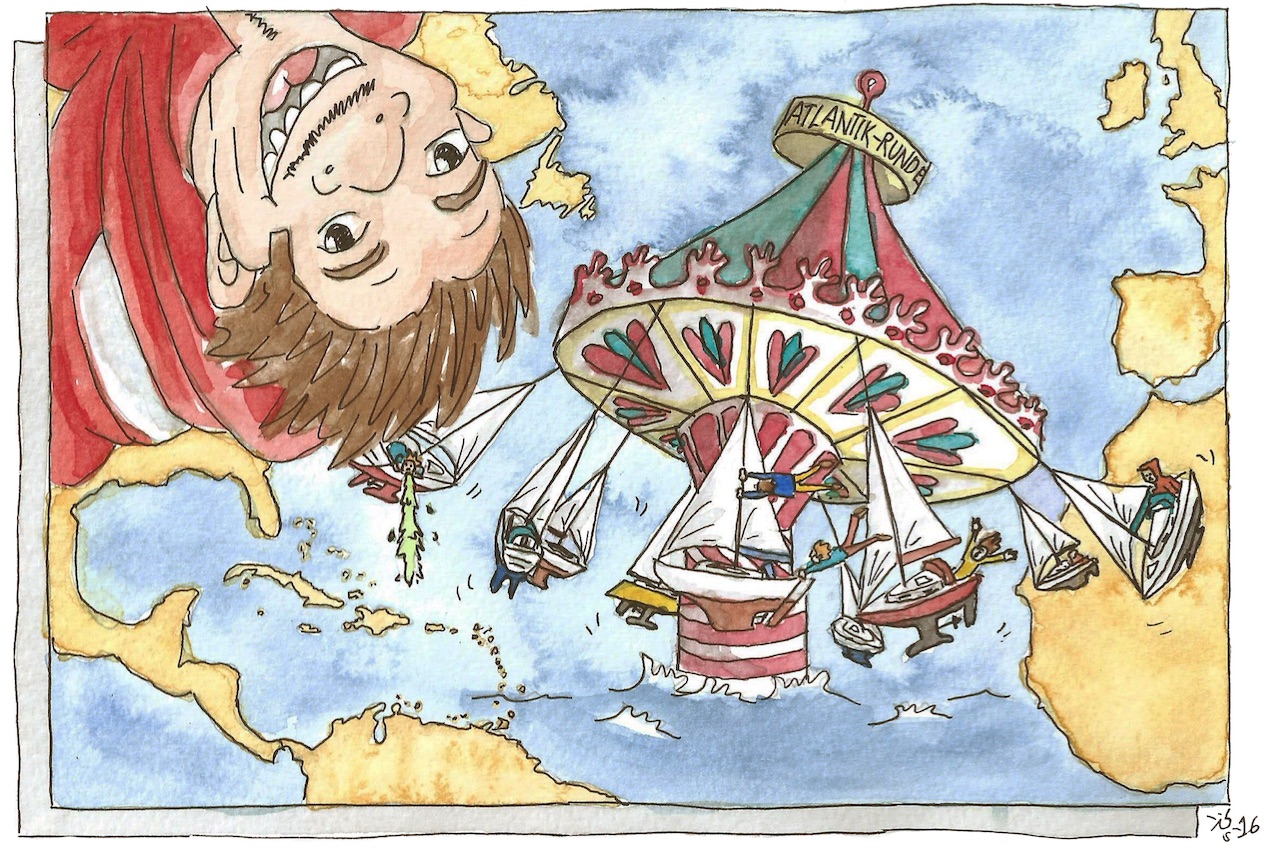 Five years packed with hard-hitting experiences should I think give me sufficient perspective to venture a few observations on my dealings with Don McIntyre. Just as Miss Smilla had a special feeling for snow, Don has a remarkable nose for adventure – and whatever adventure catches his eye gains a certain additional lustre simply from being drawn into the orbit of this Australian one of a kind. As enigmatic as he is driven, Don will seemingly stop at nothing to package up and deliver challenges with just the right ingredients to set the sensation-hungry global press salivating (and their hit counters spinning) – a proven recipe for the creation of legends and heroes, of individuals imbued with that life-affirming whiff of the extraordinary (or at least a semblance thereof). One cannot help but be impressed by an approach so dominated by dedication, passion and plain hard work.
Five years packed with hard-hitting experiences should I think give me sufficient perspective to venture a few observations on my dealings with Don McIntyre. Just as Miss Smilla had a special feeling for snow, Don has a remarkable nose for adventure – and whatever adventure catches his eye gains a certain additional lustre simply from being drawn into the orbit of this Australian one of a kind. As enigmatic as he is driven, Don will seemingly stop at nothing to package up and deliver challenges with just the right ingredients to set the sensation-hungry global press salivating (and their hit counters spinning) – a proven recipe for the creation of legends and heroes, of individuals imbued with that life-affirming whiff of the extraordinary (or at least a semblance thereof). One cannot help but be impressed by an approach so dominated by dedication, passion and plain hard work.
 Don’s obsession with adventure has also turned out to be his ticket to popularity and renown and today the 66-year old’s profile has soared to almost unimaginable heights. And he has achieved this while simultaneously helping other people to claim a spot of their own in the limelight. When Jessica Watson became a media darling through her solo circumnavigation attempt with Pink Lady, Don was there in the background reliably pulling strings: two phenomena united in a cause. Don of course plays the media like a fiddle; an absolute virtuoso at the PR game, he consistently has the press feeding from his hand. Credit where credit is due!
Don’s obsession with adventure has also turned out to be his ticket to popularity and renown and today the 66-year old’s profile has soared to almost unimaginable heights. And he has achieved this while simultaneously helping other people to claim a spot of their own in the limelight. When Jessica Watson became a media darling through her solo circumnavigation attempt with Pink Lady, Don was there in the background reliably pulling strings: two phenomena united in a cause. Don of course plays the media like a fiddle; an absolute virtuoso at the PR game, he consistently has the press feeding from his hand. Credit where credit is due!
Don’s idol as a young man, almost inevitably, was Robin Knox-Johnston. He even went so far as to start building a replica of Suhaili before quickly dropping the idea, presumably because the impatience of youth made the thought of staying ashore for long enough to finish the project unconscionable when there were other boats available ready to go right now. Had Don resolved from the very outset to dedicate his life to organising a Golden Globe Race in 2018 to commemorate the legendary original solo nonstop circumnavigation of 1968, the ultimate adventure and dream of many sailors eager to show themselves and the world their mettle, he could hardly have arranged things better. Few could claim to be as well qualified as Don to put on such a symbolically charged regatta: he even has Robin Knox-Johnston aboard as patron for his re-enactment of the challenge that assured the grizzled Englishman of his front-row seat in the nautical pantheon. Now a new generation has the chance to live the dream – and be presented and feted at press conferences as modern-day sailing heroes: an impressive spectacle capable of making waves the world over (and very much intended to do so).
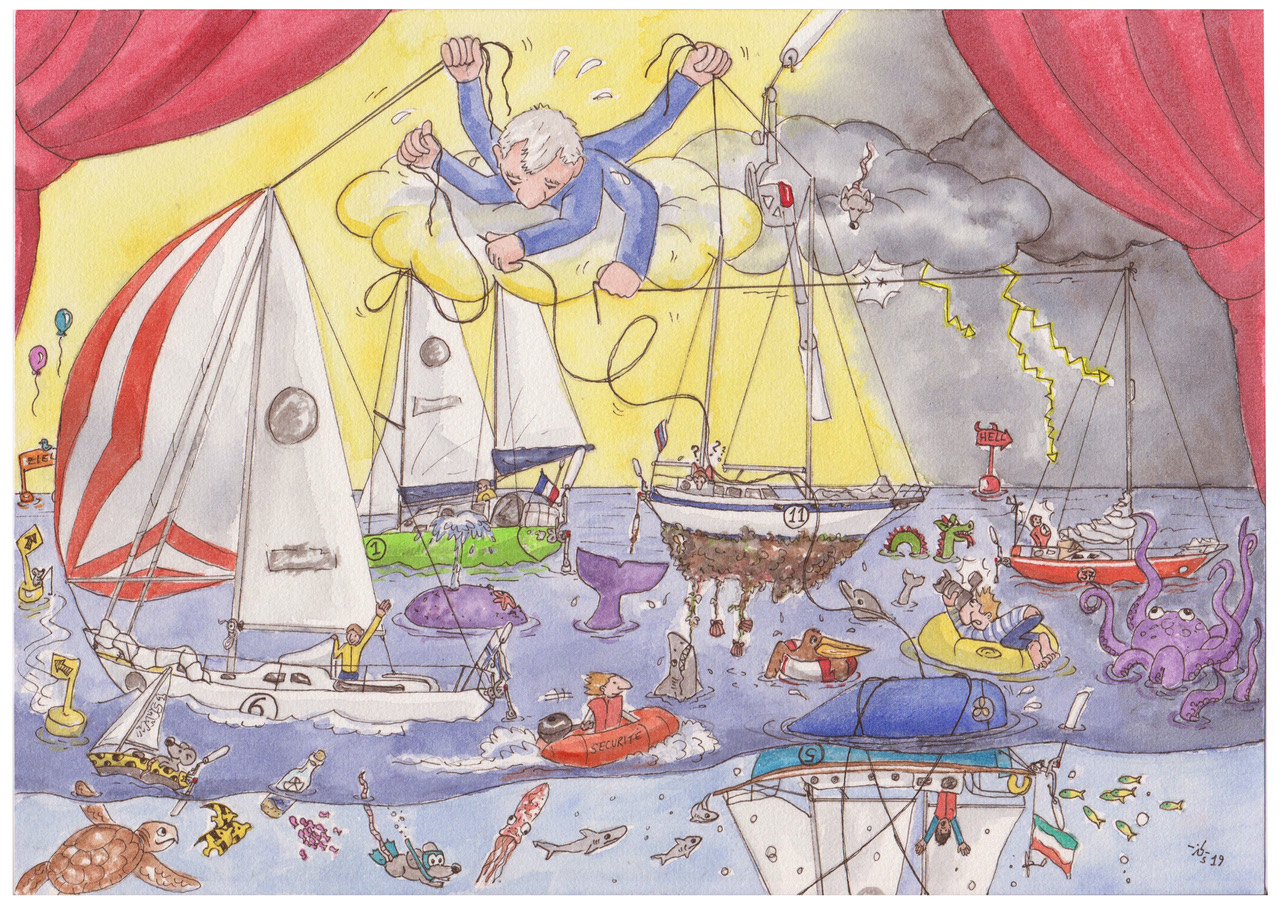 The GGR 2018 turned out to be a defining moment for me too, although I came at the whole extravaganza from a slightly different angle: 1968 was also the year many windvane self-steering systems first hit the water and it seemed logical to me to seize this moment to show the world just how far transom ornamentation technology had come in the intervening half a century. Passing through the high latitudes, where the capabilities and limits of different mechanical steering slaves would be thrown into sharp relief, it would be an exceptional test and I could not but embrace the challenge, no matter how keen the organiser might be for Windpilot to stay away.
The GGR 2018 turned out to be a defining moment for me too, although I came at the whole extravaganza from a slightly different angle: 1968 was also the year many windvane self-steering systems first hit the water and it seemed logical to me to seize this moment to show the world just how far transom ornamentation technology had come in the intervening half a century. Passing through the high latitudes, where the capabilities and limits of different mechanical steering slaves would be thrown into sharp relief, it would be an exceptional test and I could not but embrace the challenge, no matter how keen the organiser might be for Windpilot to stay away.
A detailed breakdown of the various windvane self-steering failures in the 2018 GGR can be found in my Windvane Report. It became clear over the course of the race that almost all models rely on a lateral overload protection system (shear pins or sacrificial tubes) that, once tripped, disabled the unit entirely until the skipper was able to effect repairs (alone, at sea, in conditions bad enough to cause the overload in the first place). Until this could be done, manual steering – the solo sailor’s worst nightmare – was the only option. This critical finding might – perhaps should – have convinced the organiser to rethink The Rules and allow his protégés in the 2022 GGR the option of using a backup autopilot for safety without the threat of demotion to the Chichester Class. Regrettably the organiser has revealed no more inclination to make such a change than to conduct his own open and honest investigation into the various windvane self-steering failures suffered during the last race. There have been suggestions that the rigidity of the rules and their interpretation in respect of the choice and use of windvane self-steering systems has created some uneasiness among prospective GGR 2022 participants who are not entirely comfortable with having to submit to “Don’s Rules” in order to join “Don’s race”. The story of the 2018 event, I would suggest, more than justifies their reservations:
The Notice of Race, which seems to cover every other safety-related aspect with the utmost thoroughness, appears to me to fall short when it comes to windvane self-steering. Some of the rules and wording regarding the requirement to carry an emergency rudder and demonstrate that it works are particularly troubling from a safety point of view because to my mind they simply fail fully to account for the hazards solo sailors will potentially have to confront.
Let me explain…
– Allowing only long-keelers with a robustly mounted rudder makes perfect sense: the boats do the job and there have been no rudder failures.
– The requirement to carry an emergency rudder is hard to argue against provided that it does not turn into a de facto recommendation/instruction to prefer auxiliary rudder units over other types of windvane self-steering system.
– The value (or otherwise) of an auxiliary rudder system as an emergency steering solution depends directly on the rudder area that will be needed in an emergency. The emergency rudder needs to be big enough to provide effective steering even if the main rudder and its all-important lateral surface area are lost altogether (which may very well be the case if the emergency rudder is needed). The auxiliary rudders used with windvane self-steering systems usually have only about 30 % of the surface area of the corresponding main rudder. Auxiliary rudder systems actually rely on the main rudder when steering after all: the main rudder is trimmed to balance the boat and then fixed in position so that the auxiliary rudder has only to worry about minor course corrections. This alone provides a fairly compelling indication that the auxiliary rudder of a windvane self-steering system will struggle to control the boat properly in an emergency. Take away the main rudder completely and the auxiliary rudder will of course be even less effective. These rules appearing to point competitors in the direction of auxiliary rudder systems for self-steering would be easier to stomach were the organiser not the beneficiary of sponsorship from an auxiliary rudder system manufacturer.
The auxiliary rudder system suggested and favoured by the organiser for use on the long-keelers of the GGR also has other, perhaps less obvious disadvantages in this context that a closer look at certain technical peculiarities makes clear.
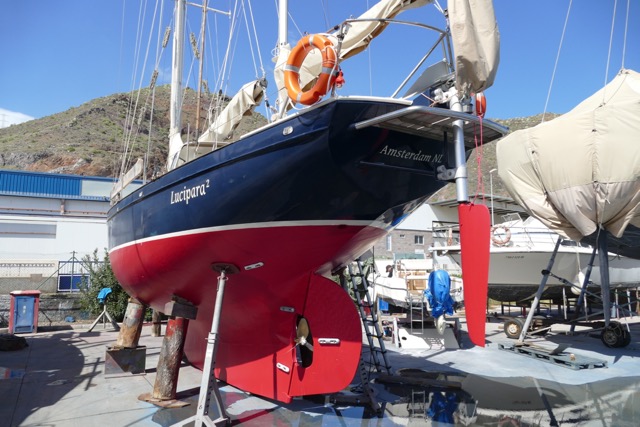 I discussed the subject of emergency rudders in detail with all the Windpilot sailors in the 2018 GGR ahead of the race and advised them not even to think about using my Pacific Plus because I felt that auxiliary (and double) rudder systems were ill-suited for the risks and hazards of the high latitudes. The following factors need to be considered particularly carefully in the context of the GGR owing to the vanegear’s exposed position on the transom:
I discussed the subject of emergency rudders in detail with all the Windpilot sailors in the 2018 GGR ahead of the race and advised them not even to think about using my Pacific Plus because I felt that auxiliary (and double) rudder systems were ill-suited for the risks and hazards of the high latitudes. The following factors need to be considered particularly carefully in the context of the GGR owing to the vanegear’s exposed position on the transom:
– The difficulty of repairing/replacing the auxiliary rudder and/or its shear pin,
– The risk of damage caused by UFOs
– The strength and reliability of the mounting on the transom
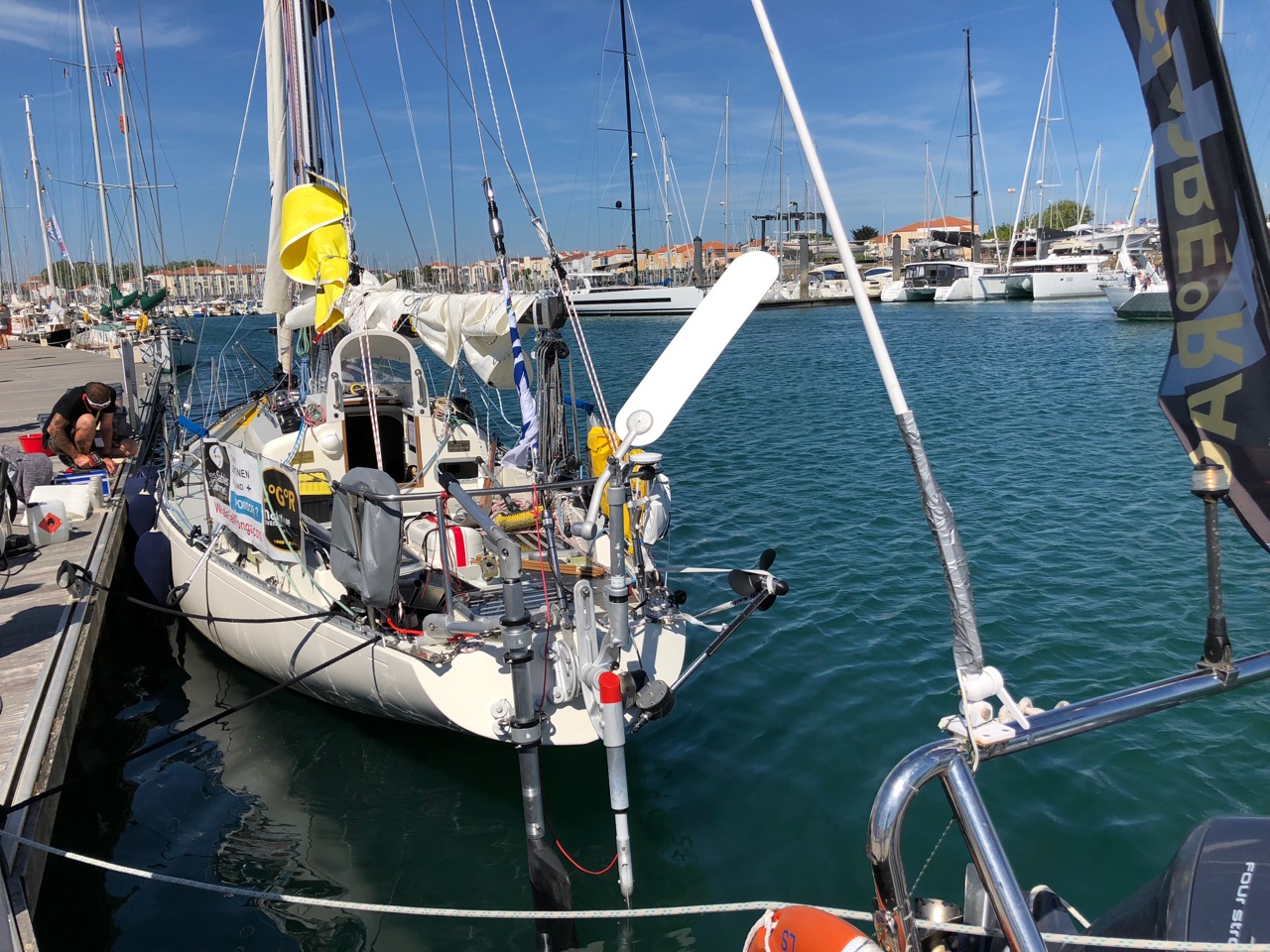
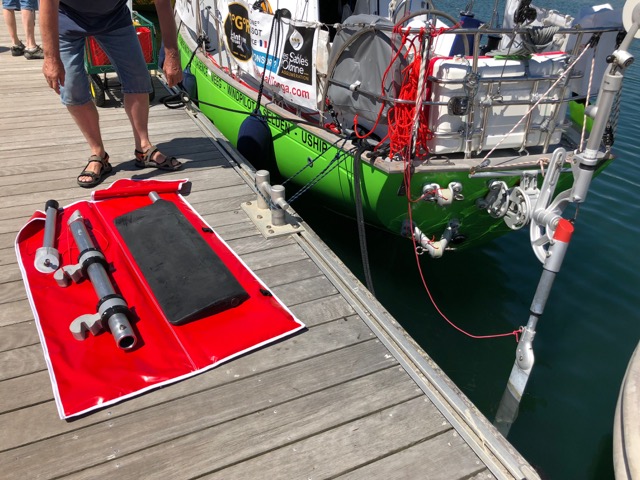
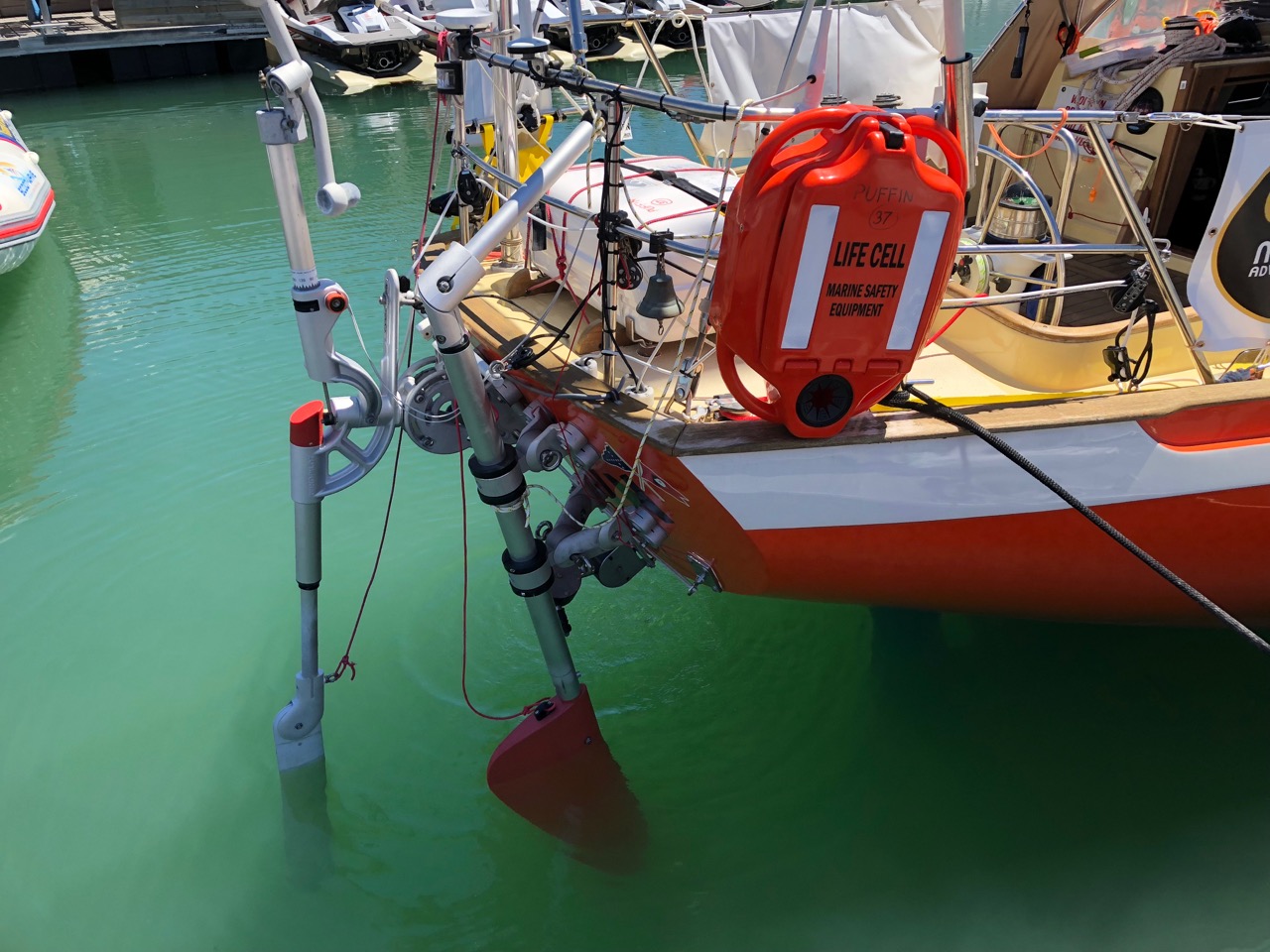 Istvan, Antoine, Igor and Tapio elected to carry my recommended SOS Rudder system in case of steering emergency. Fortunately, none of them had cause to drag it from its bunk. Abhilash devised his own solution.
Istvan, Antoine, Igor and Tapio elected to carry my recommended SOS Rudder system in case of steering emergency. Fortunately, none of them had cause to drag it from its bunk. Abhilash devised his own solution.
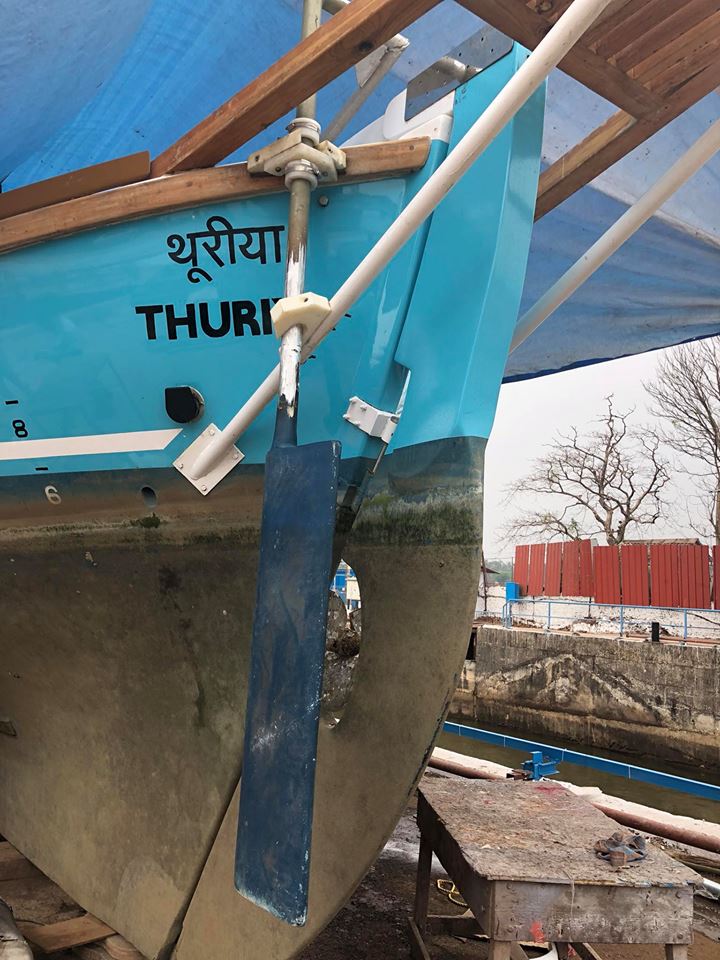
Using an auxiliary rudder system on GGR boats entails hazards that could become problematic for manufacturers too if the rigours of the race expose vulnerabilities that cannot be ignored. What, people want to know, is the root cause for a system not measuring up? Were the risks underestimated? Was there a lack of understanding of the realities of the environment?
The recent failures suffered by
1. Ertan Beskardes and the Rustler 36 Lazy Otter
2. Guy Waitesaboard the Tradewind 35 Sagarmatha
tell me it would be wise at this time to delve a little deeper into auxiliary rudder system technology, a subject with which I have been familiar for a good 50 years.
First of all we ought to consider how a windvane self-steering system attaches to the hull and the forces involved.
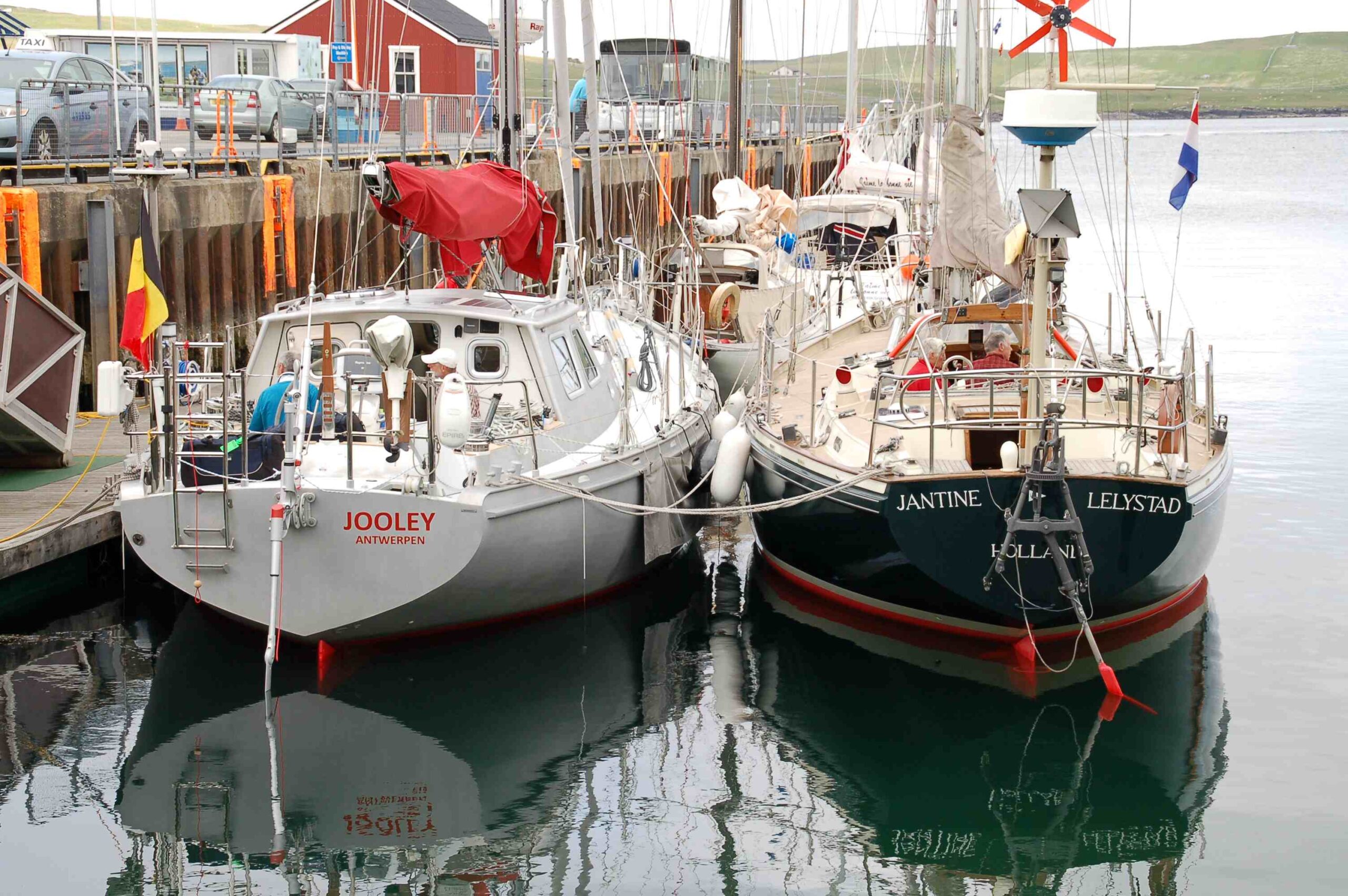 Servo-pendulum systems generate their potentially huge steering forces from the lateral movement of the pendulum rudder shaft and the rudder blade at its end. The length of the pendulum arm from the bottom end of the rudder blade to the axle on which the pendulum arm pivots is a good guide to the power of this type of system because a longer lever will obviously deliver more steering force to the main rudder. All that the mounting on the transom has to withstand is the weight of the system itself, which does not amount to much, plus the steering force applied at the tiller or wheel, which is the same as the force brought to bear by the skipper’s fingers when steering manually – generally fairly little, in other words. Overloading, in the sense of exposure to additional forces, can only occur if exceptional movements – such as in a knockdown, rollover or pitchpole – cause the pendulum rudder shaft and blade to hit a lateral end stop. The likely result then is a broken/tripped shear pin/sacrificial tube/spring-loaded link, which will need to be replaced/reset manually to restore self-steering.
Servo-pendulum systems generate their potentially huge steering forces from the lateral movement of the pendulum rudder shaft and the rudder blade at its end. The length of the pendulum arm from the bottom end of the rudder blade to the axle on which the pendulum arm pivots is a good guide to the power of this type of system because a longer lever will obviously deliver more steering force to the main rudder. All that the mounting on the transom has to withstand is the weight of the system itself, which does not amount to much, plus the steering force applied at the tiller or wheel, which is the same as the force brought to bear by the skipper’s fingers when steering manually – generally fairly little, in other words. Overloading, in the sense of exposure to additional forces, can only occur if exceptional movements – such as in a knockdown, rollover or pitchpole – cause the pendulum rudder shaft and blade to hit a lateral end stop. The likely result then is a broken/tripped shear pin/sacrificial tube/spring-loaded link, which will need to be replaced/reset manually to restore self-steering.
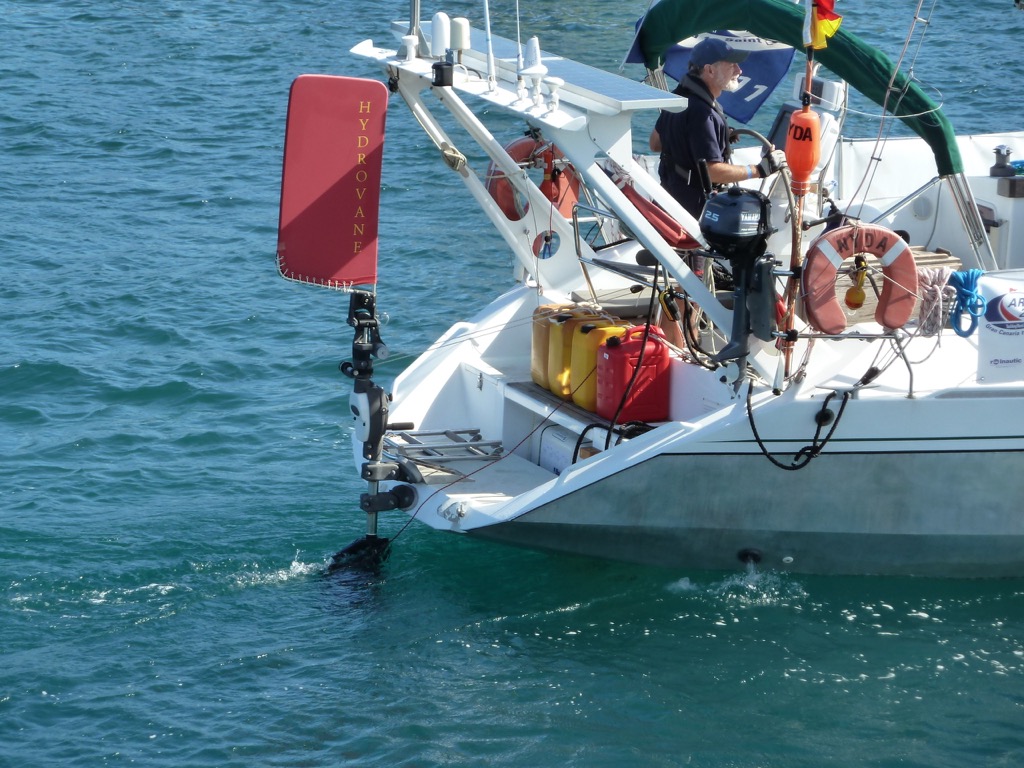 The mounting components and substrate for an auxiliary rudder system have to cope with much greater loads. The auxiliary rudder shaft is attached rigidly to the transom, so the force of every lateral movement of the boat and of any waves that hit the auxiliary rudder has to be absorbed by the mounting components and transom in addition to the weight of the system itself, the force associated with the actual steering movements and the shock of any knockdown, rollover or pitchpole. Flotsam is a real hazard for all types of windvane self-steering system, of course, but that rigid connection makes auxiliary rudders with overload protection in the form of a shear pin especially vulnerable. Now imagine that auxiliary rudder is being used not for self-steering but in its emergency rudder capacity when the shear pin shears… An auxiliary rudder installed centrally will enjoy a measure of protection from the keel and (assuming it is still there) the main rudder but one installed to the side is totally exposed to whatever comes floating along.
The mounting components and substrate for an auxiliary rudder system have to cope with much greater loads. The auxiliary rudder shaft is attached rigidly to the transom, so the force of every lateral movement of the boat and of any waves that hit the auxiliary rudder has to be absorbed by the mounting components and transom in addition to the weight of the system itself, the force associated with the actual steering movements and the shock of any knockdown, rollover or pitchpole. Flotsam is a real hazard for all types of windvane self-steering system, of course, but that rigid connection makes auxiliary rudders with overload protection in the form of a shear pin especially vulnerable. Now imagine that auxiliary rudder is being used not for self-steering but in its emergency rudder capacity when the shear pin shears… An auxiliary rudder installed centrally will enjoy a measure of protection from the keel and (assuming it is still there) the main rudder but one installed to the side is totally exposed to whatever comes floating along.
The loads on the auxiliary rudder shaft are affected by the following factors:
– The distance (leverage) between the bottom edge of the auxiliary rudder blade and the lower mount on the transom.
– The vertical distance between the lower and upper mounting brackets on the transom.
– The distance (leverage) between the upper mounting bracket on the transom and the axle on which the windvane rotates
It does not take long to work out that mounting an auxiliary rudder system places considerable demands on all of the components involved, including the parts of the hull to which the loads involved are transmitted. The lower braces deserve particular attention with the traditional hull forms of the boats used for the GGR. Ideally these braces should be V-shaped elements arranged symmetrically with respect to the transom to ensure loads are distributed evenly to the hull. Any asymmetry of the lower mounting braces must surely mean an uneven distribution of the loads, inevitably increasing the force transmitted to one part of the transom.
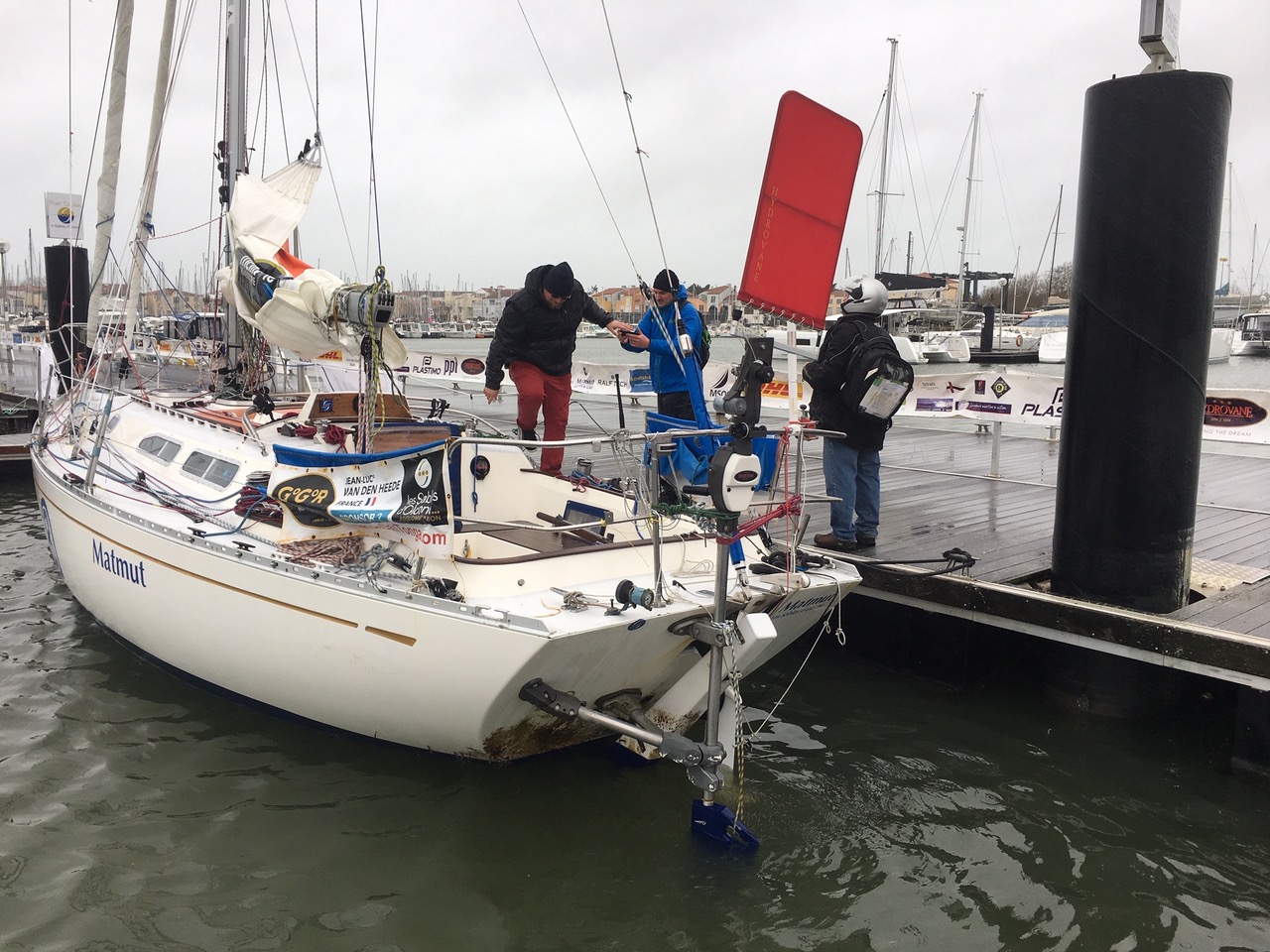 The Rustler 36 was drawn with an almost flat transom and consequently has less local hull strength in this area than boats like the Tradewind 35, Biscay 36, Endurance 35 and others designed with more curvature.
The Rustler 36 was drawn with an almost flat transom and consequently has less local hull strength in this area than boats like the Tradewind 35, Biscay 36, Endurance 35 and others designed with more curvature.
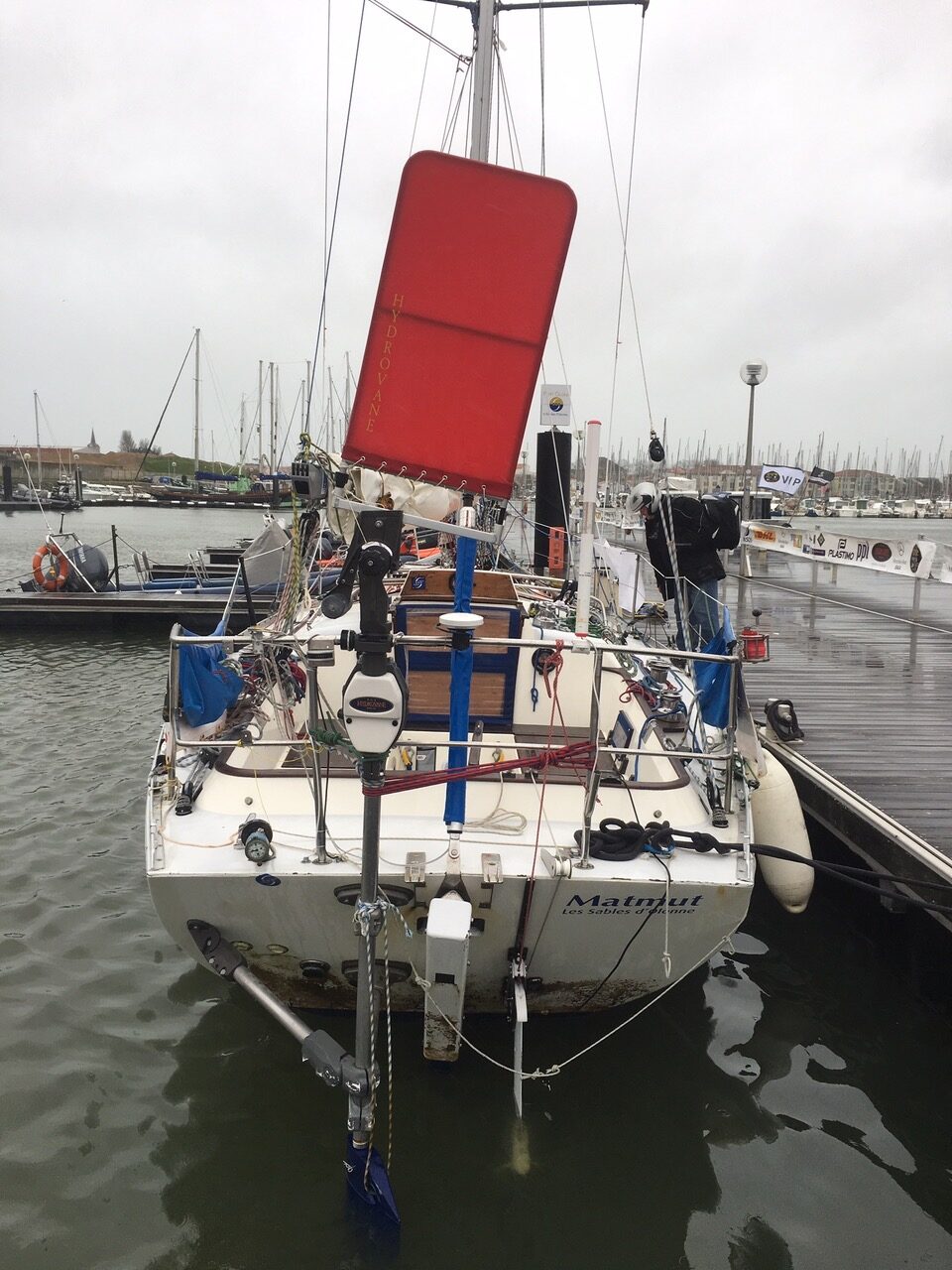 I suspect the Rustler’s flat transom has the potential to support vibration, especially if/because the lateral brace attaches close to the (dimensionally stable) edge of the stern while the other attaches to a flat transom surface at an angle of 90 degrees. If, moreover, the angle between the two braces and the vertical distance between the upper and lower mounting brackets are both relatively small, there has to be a real possibility in extreme situations (knockdown, rollover) that the loads arising will be too much for the weakest link in the transmission chain to bear. We need look no further than the recent Lazy Otter incident to discover the consequences what happens.
I suspect the Rustler’s flat transom has the potential to support vibration, especially if/because the lateral brace attaches close to the (dimensionally stable) edge of the stern while the other attaches to a flat transom surface at an angle of 90 degrees. If, moreover, the angle between the two braces and the vertical distance between the upper and lower mounting brackets are both relatively small, there has to be a real possibility in extreme situations (knockdown, rollover) that the loads arising will be too much for the weakest link in the transmission chain to bear. We need look no further than the recent Lazy Otter incident to discover the consequences what happens.
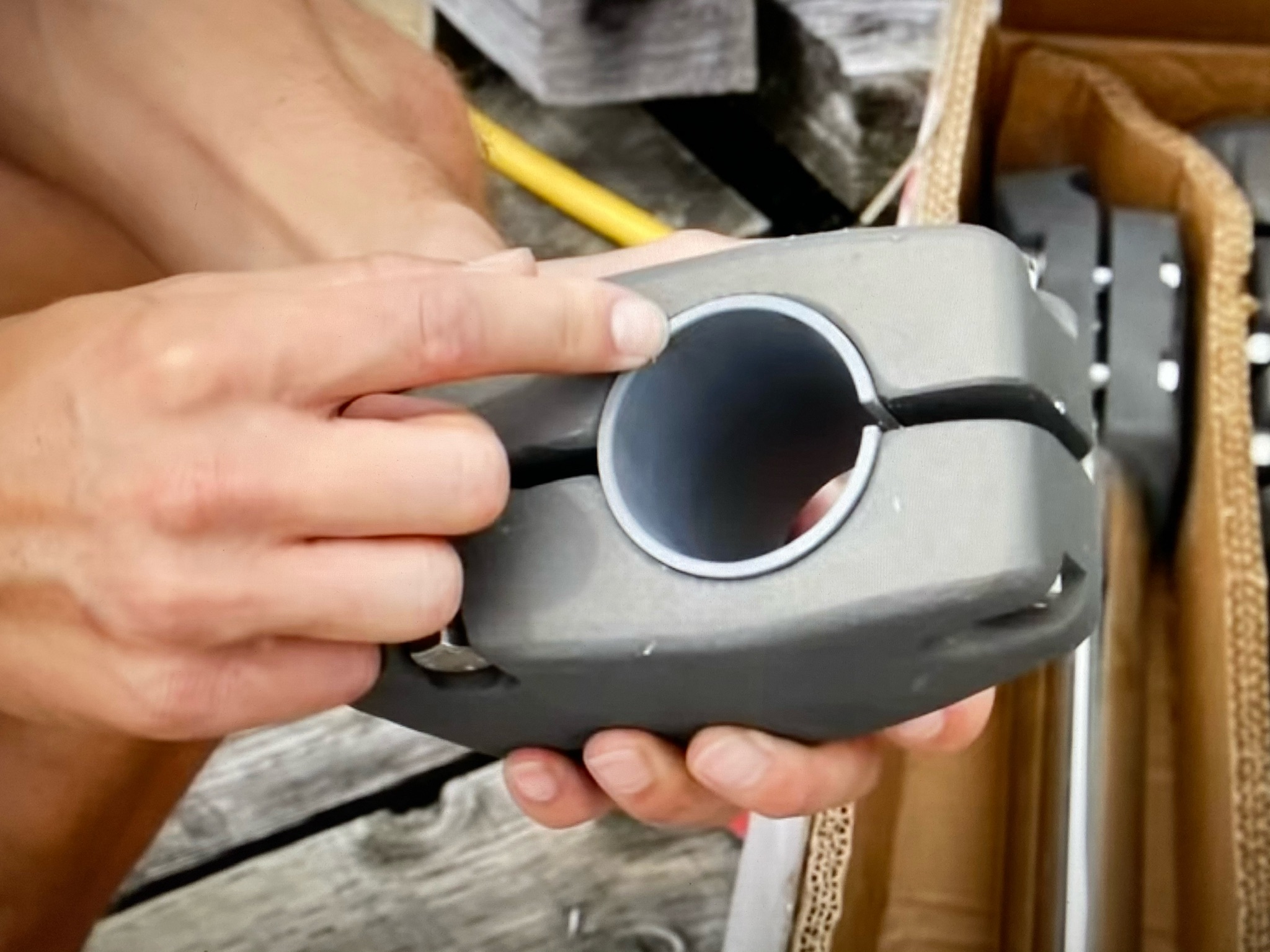
credits Hydrovane.com
My experience though suggests that a lack of friction will unnecessarily reduce the clamping effect because the components are able to move against each other relatively easily despite the great pressure applied, a situation that only increases the load on the M 10 fastenings.
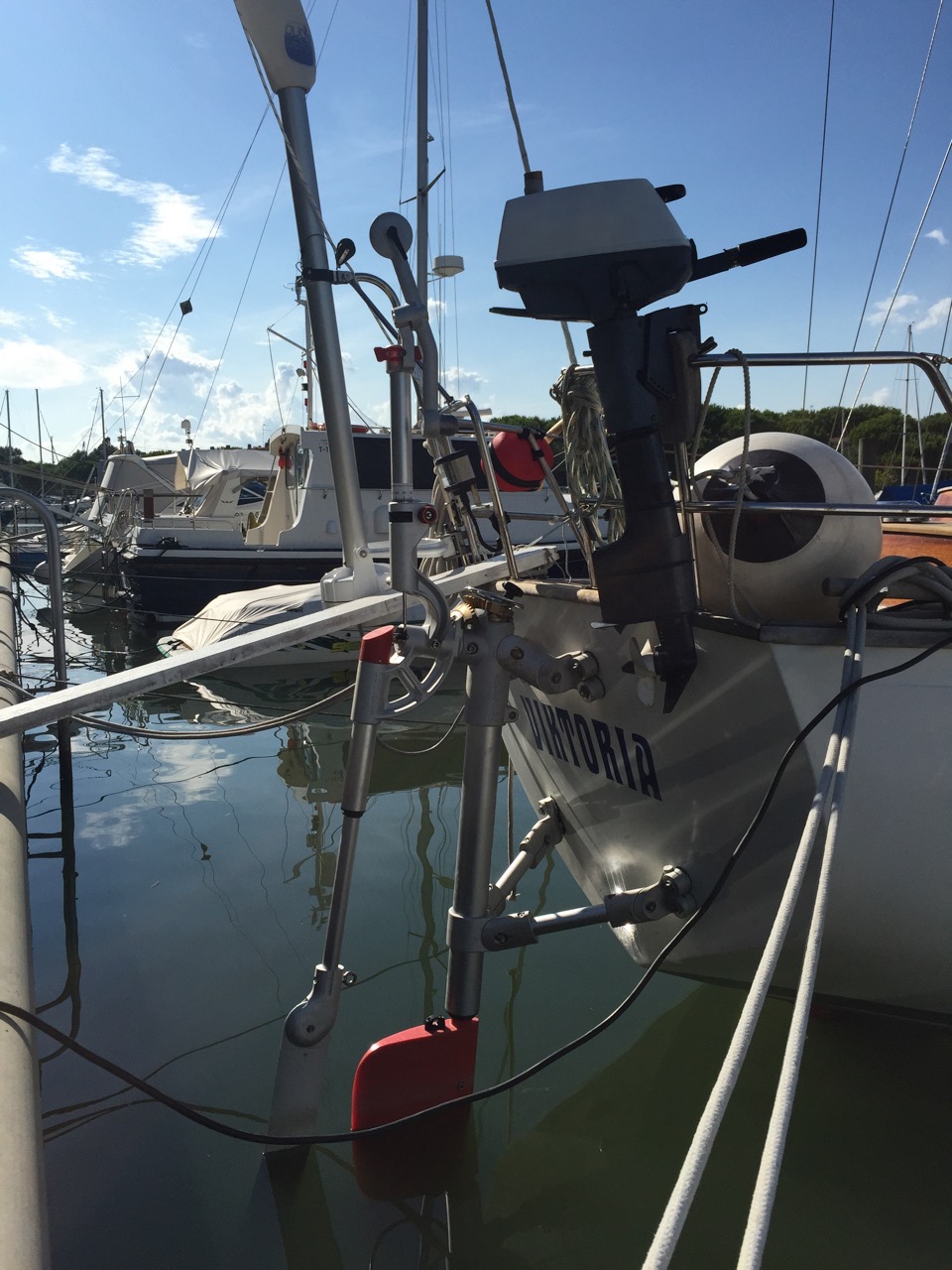 It is no coincidence that I specify much more substantial mounting components for my Windpilot Pacific Plus. The Pacific Plus, which uses an auxiliary rudder of a similar size, comes with an aluminium shaft sleeve that has a diameter of 90 mm and wall thickness of 5 mm and is retained by large-area clamping/friction in a 90 mm-tall form-fitting clamp tensioned with M 12 bolts.
It is no coincidence that I specify much more substantial mounting components for my Windpilot Pacific Plus. The Pacific Plus, which uses an auxiliary rudder of a similar size, comes with an aluminium shaft sleeve that has a diameter of 90 mm and wall thickness of 5 mm and is retained by large-area clamping/friction in a 90 mm-tall form-fitting clamp tensioned with M 12 bolts.
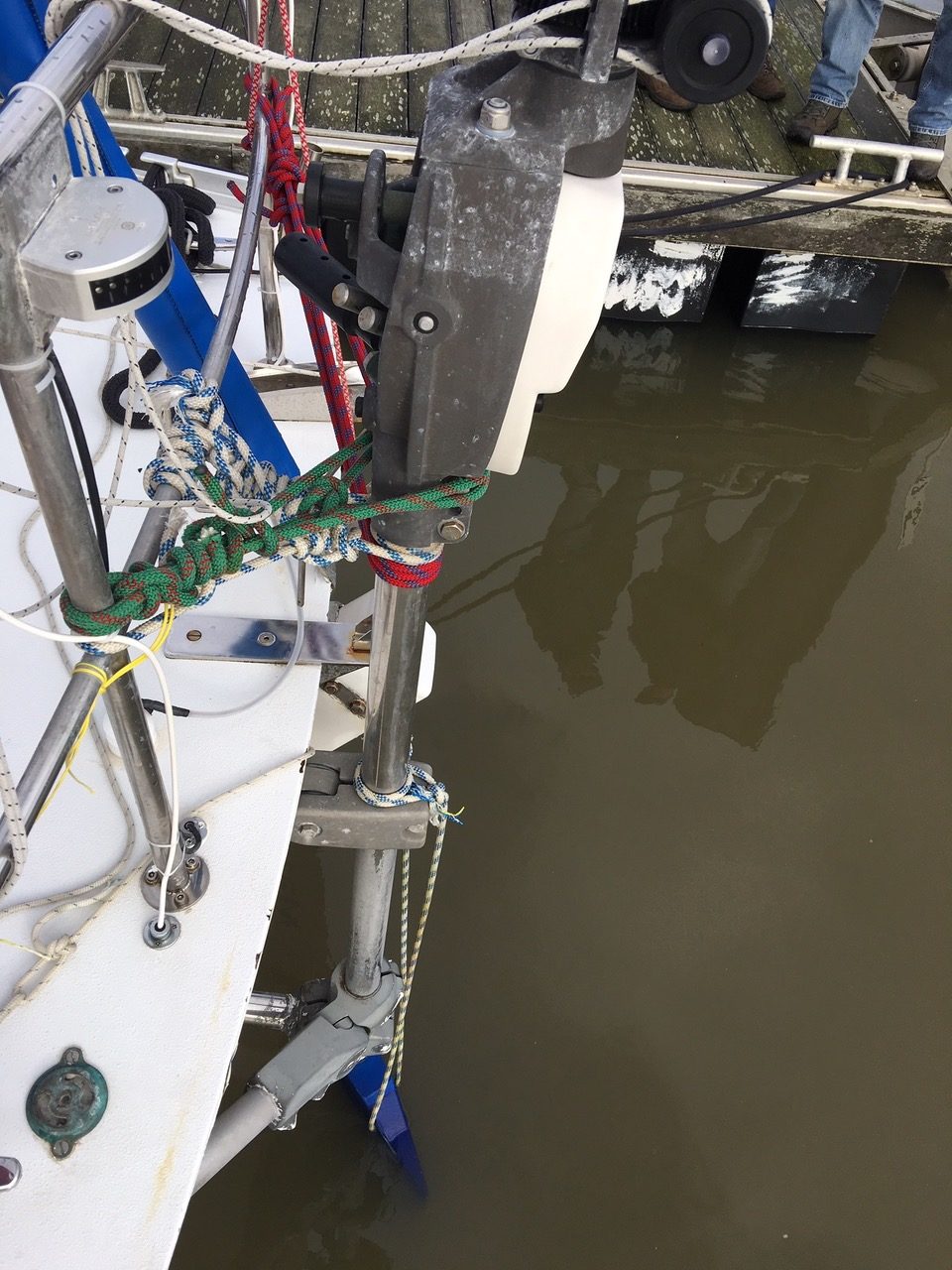
credits Eli Van den Broek
Guy Waites had the auxiliary rudder detach from his system on Sagarmatha after the shear pin broke during calm weather in the Atlantic. Favoured with flat water for the mission, he timed the replacement operation at 17 minutes (a success he marked with a heartfelt “Hallelujah!”). He then turned his attention to tightening the bottom clamp on his auxiliary rudder gear, apparently causing the lower bracket to fail in the process.
Are such events really without precedent and entirely unknown to the manufacturer? That seems debatable – at best. Whatever the truth of the matter though, the whole world can now hopefully understand the pitfalls associated with a marketing strategy that involves promoting a windvane self-steering system on the basis of its suitability as an emergency rudder and using this pitch to gain the support of event organisers in the hope/expectation that they will then give the system concerned an edge by incorporating this supposed safety aspect into their terms and conditions. A windvane self-steering system that can double up as an emergency rudder might seem to make sense for modern yachts joining flotilla cruising events because for them, the performance of the vanegear will tend to be of only minor importance. Self-steering problems in the GGR, on the other hand, can have the most serious of consequences so functional reliability is absolutely critical. The organiser of the GGR uses the purported emergency rudder capability as a pretext to favour this system on safety grounds right from the outset even though it appears to have some design vulnerabilities and only limited utility for emergency steering. I have to admit this tie-up between a windvane self-steering system manufacturer and a marketing juggernaut like Don McIntyre looks like a very smart move for both sides so far but I do hope manufacturer and organiser alike remember their responsibilities to the sailors at the heart of the event. Negative synergies have the power to harm everyone involved, not just the promoter and his sponsor but, more importantly, the sailors as well. The question facing the media is how far to go in exploring the realities of the situation and how much to share with their audience. What are journalists to do when the story pulls them in one direction and their deep-rooted instinct to look after their sources pulls them in the other? I don’t envy anyone the choices that have to made but I know wherever the buck does stop, it can no longer be with me.
I hope for the sailors’ sake that the organiser rethinks his rules regarding a second self-steering option so that windvane self-steering problems will not so often lead to a mayday for the competitors under his care. Constantly repeating the mantra that every sailor is ultimately responsible for his or her own fate cannot absolve the organiser of all culpability if he does not at the same time support his protégés’ right to safety with corresponding rules.
The start is still 425 days away as I write this. Let us hope this time is used wisely: the latest announcements from the manufacturer of the gear concerned – and from the organiser as well for that matter – leave some doubt as to whether those with the power to do something about it really appreciate the seriousness of the situation. Don’s comment online “Wow … unbelievable??”, while the manufacturer assessed Ertan’s breakage as an
”Unusually unlucky freak accident”.
I would like, in conclusion, to call on everyone who has the standing to make a difference here, reporters included, to reflect on and accept the importance of this issue. Nothing can be allowed to take precedence over competitor safety.
EPILOG – GGR 2022 – And so it goes on – but without Windpilot
05.07.2021
Peter Foerthmann

































